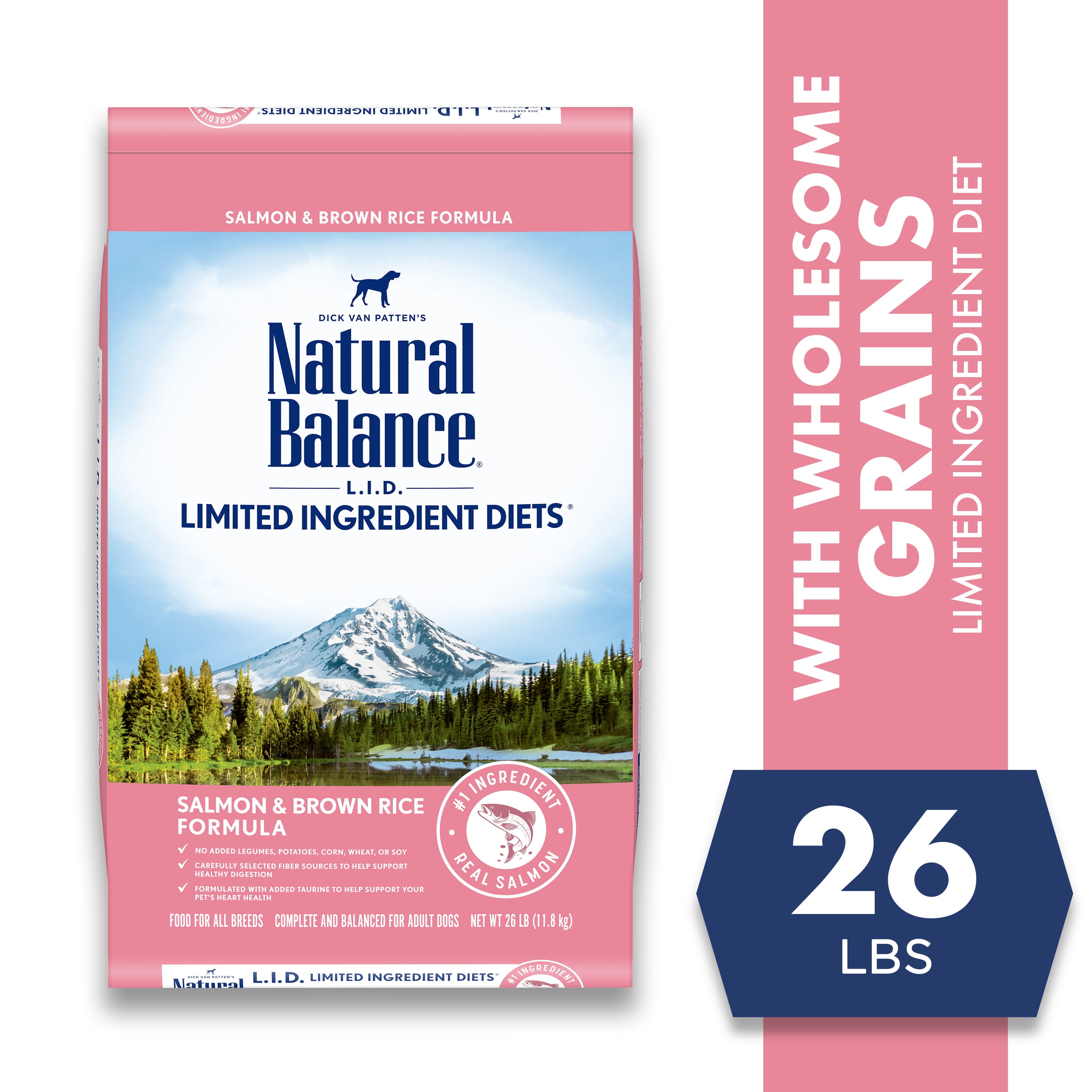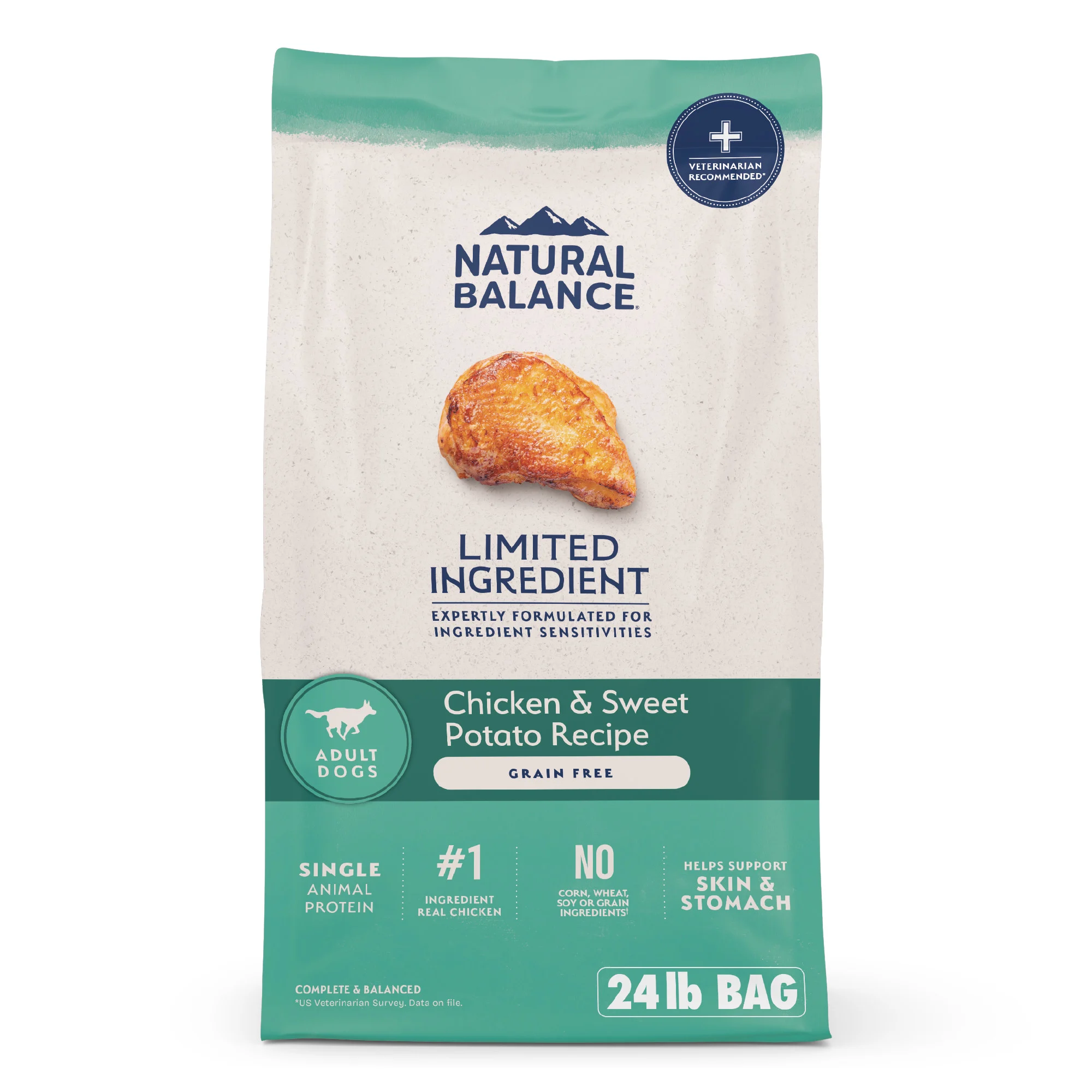Limited ingredient dog food is revolutionizing the pet food industry, offering a solution for dogs with allergies, sensitivities, and digestive issues. Join us as we explore the benefits, types, considerations, and future trends of this innovative diet.
From understanding the health benefits to navigating the different types and making informed choices, this guide will empower you to make the best decisions for your furry friend.
Benefits of Limited Ingredient Dog Food

Feeding your dog a limited ingredient diet offers a range of potential health benefits. By eliminating common allergens and irritants, you can improve your pet’s overall well-being, reduce the risk of allergies and sensitivities, and support digestive health.
Limited ingredient dog food is particularly beneficial for dogs with allergies or sensitivities to certain ingredients, such as grains, proteins, or additives. By avoiding these triggers, you can help reduce symptoms such as itching, skin irritation, and digestive upset.
Digestive Health
Limited ingredient dog food can significantly improve digestive health. The reduced number of ingredients means there are fewer potential irritants that can upset your dog’s stomach. This can lead to reduced gas, bloating, and diarrhea, and improved stool quality.
Skin and Coat Health
The ingredients in limited ingredient dog food can play a crucial role in promoting skin and coat health. Omega-3 fatty acids, found in fish and flaxseed, help nourish the skin and reduce inflammation. Antioxidants, such as vitamin E and beta-carotene, protect the skin from damage and promote a healthy coat.
Overall Well-being
Feeding your dog a limited ingredient diet can support overall well-being. By eliminating potential allergens and irritants, you can reduce inflammation throughout the body. This can lead to improved energy levels, reduced pain and stiffness, and a stronger immune system.
Types of Limited Ingredient Dog Food
Limited ingredient dog food can be categorized into several types based on their primary protein source. Each type has unique characteristics that cater to specific dietary needs and breed predispositions.
The following table provides a comprehensive overview of different types of limited ingredient dog food, including protein type, common ingredients, and suitable breeds:
Protein Type and Common Ingredients
| Protein Type | Common Ingredients | Suitable Breeds |
|---|---|---|
| Lamb | Lamb, brown rice, sweet potato, pumpkin, cranberries | Sensitive breeds, dogs with allergies, dogs with digestive issues |
| Venison | Venison, peas, lentils, sweet potato, blueberries | Active breeds, dogs with sensitive stomachs, dogs with skin allergies |
| Duck | Duck, quinoa, oatmeal, carrots, apples | Dogs with food allergies, dogs with sensitive skin, dogs with digestive problems |
| Salmon | Salmon, brown rice, sweet potato, peas, carrots | Dogs with fish allergies, dogs with joint problems, dogs with skin issues |
| Turkey | Turkey, sweet potato, peas, cranberries, blueberries | Dogs with poultry allergies, dogs with sensitive stomachs, dogs with immune system issues |
| Beef | Beef, brown rice, oats, carrots, apples | Active breeds, dogs with high energy levels, dogs with digestive issues |
Examples of Popular Brands
- Blue Buffalo Basics Limited Ingredient Diet
- Hill’s Science Diet Sensitive Stomach & Skin
- Purina Pro Plan Veterinary Diets HA
- Royal Canin Veterinary Diet Gastrointestinal Low Fat
- Eukanuba Limited Ingredient Diet
Considerations When Choosing Limited Ingredient Dog Food
Before switching to a limited ingredient diet, it’s crucial to consult with your veterinarian. They can assess your dog’s individual needs, medical history, and allergies to determine if a limited ingredient diet is suitable. Your veterinarian can also recommend the most appropriate food based on your dog’s age, activity level, and any underlying health conditions.
When selecting a limited ingredient dog food, consider the following factors:
Dog’s Age
Puppies and senior dogs may have different nutritional requirements than adult dogs. Puppies need a diet rich in protein and calories to support their growth and development. Senior dogs, on the other hand, may benefit from a diet lower in calories and fat to prevent weight gain and other age-related health issues.
Activity Level
Active dogs require more calories than less active dogs. If your dog is highly active, choose a food that is high in protein and fat to provide the energy they need.
Health Conditions
If your dog has any underlying health conditions, such as allergies, skin problems, or digestive issues, you may need to choose a limited ingredient food that is specifically formulated for their condition.
It’s important to transition your dog to a new diet gradually over a period of 7-10 days. Start by mixing a small amount of the new food with their old food, and gradually increase the amount of new food each day until they are fully transitioned to the new diet.
Comparing Limited Ingredient Dog Food to Other Diets
Limited ingredient dog food is just one of many specialized diets available for dogs. Each diet has its own advantages and disadvantages, and the best choice for your dog will depend on their individual needs.
Here is a comparison of limited ingredient dog food to other popular diets, such as grain-free, raw, and vegan diets:
Nutritional Adequacy
- Limited ingredient dog food:Limited ingredient dog food is typically nutritionally complete and balanced, meaning that it contains all the nutrients that your dog needs.
- Grain-free dog food:Grain-free dog food is not necessarily nutritionally complete and balanced. Some grain-free dog foods may be deficient in certain nutrients, such as fiber and B vitamins.
- Raw dog food:Raw dog food can be nutritionally complete and balanced, but it is important to make sure that the food is sourced from a reputable supplier and that it is properly prepared.
- Vegan dog food:Vegan dog food is not nutritionally complete and balanced. Vegan dog food does not contain any animal products, which means that it is deficient in certain nutrients, such as taurine and vitamin B12.
Cost
- Limited ingredient dog food:Limited ingredient dog food is typically more expensive than other types of dog food.
- Grain-free dog food:Grain-free dog food is typically more expensive than other types of dog food.
- Raw dog food:Raw dog food is typically more expensive than other types of dog food.
- Vegan dog food:Vegan dog food is typically more expensive than other types of dog food.
Availability
- Limited ingredient dog food:Limited ingredient dog food is available at most pet stores and online retailers.
- Grain-free dog food:Grain-free dog food is available at most pet stores and online retailers.
- Raw dog food:Raw dog food is available at some pet stores and online retailers, but it is not as widely available as other types of dog food.
- Vegan dog food:Vegan dog food is available at some pet stores and online retailers, but it is not as widely available as other types of dog food.
Homemade Limited Ingredient Dog Food Recipes
Homemade limited ingredient dog food recipes offer a healthy and customizable alternative to commercial dog food. By preparing your pet’s meals at home, you can control the ingredients and ensure they are tailored to their specific dietary needs.
Creating Homemade Limited Ingredient Dog Food
Making homemade limited ingredient dog food is relatively simple. Here are the steps to follow:
- Choose a protein source that is appropriate for your dog’s dietary restrictions. Some good options include chicken, beef, fish, or lamb.
- Select a few fresh fruits and vegetables that are safe for dogs. Some good choices include carrots, apples, blueberries, and sweet potatoes.
- Cook the protein source and vegetables until they are fully cooked.
- Combine the cooked ingredients in a food processor or blender until they are pureed.
- Store the pureed food in airtight containers in the refrigerator for up to 3 days, or in the freezer for up to 2 months.
Recipes for Different Protein Sources and Dietary Restrictions, Limited ingredient dog food
Here are some recipes for homemade limited ingredient dog food for different protein sources and dietary restrictions:Chicken and Rice
- 1 pound boneless, skinless chicken breasts
- 1 cup brown rice
- 1 carrot, chopped
- 1 apple, chopped
Beef and Sweet Potato
- 1 pound ground beef
- 1 cup sweet potato, cooked and mashed
- 1/2 cup blueberries
- 1/2 cup carrots, chopped
Fish and Vegetable
If your furry friend has a sensitive tummy, limited ingredient dog food can be a lifesaver. These formulas are made with just a few simple ingredients, which can help to reduce allergic reactions and digestive upset. But what if you’re on a tight budget? The salvation army food pantry may be able to help.
They offer a variety of pet food, including limited ingredient options, to families in need. So if you’re struggling to afford quality dog food, don’t hesitate to reach out to your local food pantry.
- 1 pound salmon or other fish
- 1 cup cooked brown rice
- 1 cup chopped carrots
- 1 cup chopped celery
Lamb and Apple
- 1 pound ground lamb
- 1 cup cooked brown rice
- 1 apple, chopped
- 1/2 cup carrots, chopped
Benefits and Limitations of Homemade Dog Food
Preparing homemade dog food offers several benefits, including:
- Control over ingredients and dietary restrictions
- Use of fresh, whole foods
- Potential cost savings
However, there are also some limitations to consider:
- Time and effort required to prepare meals
- Need for proper storage and handling to prevent spoilage
- Potential nutritional imbalances if not formulated correctly
Limited Ingredient Dog Food Trends and Innovations
The limited ingredient dog food market is experiencing a surge in popularity, driven by growing consumer awareness of the benefits of a simplified diet for their pets. This trend is expected to continue as pet owners become more informed about the impact of food on their dogs’ health and well-being.One
of the most significant trends in the limited ingredient dog food market is the rise of innovative ingredients and formulations that address specific health concerns. For example, some manufacturers are now using ancient grains, such as quinoa and amaranth, as a source of fiber and antioxidants.
Others are incorporating prebiotics and probiotics to support digestive health.
Emerging Trends
* Increasing demand for limited ingredient dog food with novel protein sources, such as venison, kangaroo, and duck.
- Growing popularity of freeze-dried and dehydrated limited ingredient dog food, which offers convenience and nutritional benefits.
- Emergence of personalized limited ingredient dog food diets, tailored to individual dogs’ specific health needs.
Innovative Ingredients and Formulations
* Use of functional ingredients, such as turmeric and green-lipped mussel, to address joint health concerns.
- Incorporation of superfoods, such as blueberries and cranberries, for their antioxidant and anti-inflammatory properties.
- Development of hypoallergenic limited ingredient dog food diets, specifically designed for dogs with food sensitivities.
The future of limited ingredient dog food looks bright. As the demand for healthier and more personalized pet food options continues to grow, manufacturers are expected to continue to innovate and develop new products that meet the needs of discerning pet owners.
This trend is likely to have a significant impact on the pet industry, as more and more pet owners choose to feed their dogs a limited ingredient diet.
Final Review: Limited Ingredient Dog Food
As the demand for limited ingredient dog food continues to grow, the future holds exciting innovations and formulations tailored to specific health concerns. By embracing this dietary approach, you can provide your dog with optimal nutrition, promoting their overall well-being and strengthening the bond between you and your canine companion.




